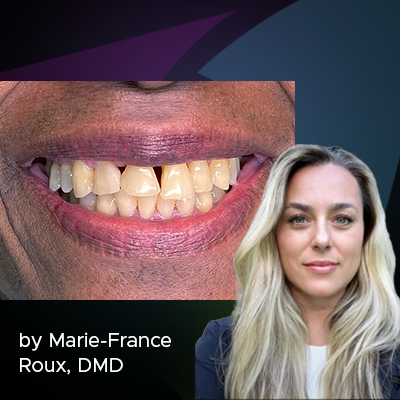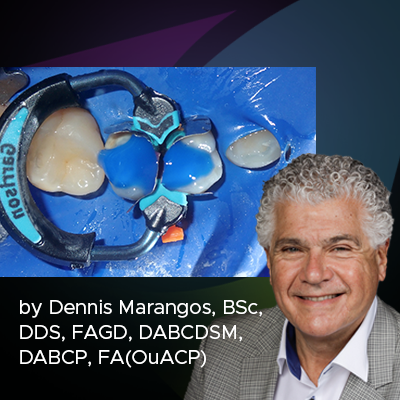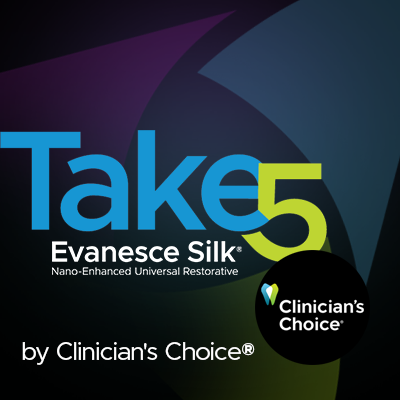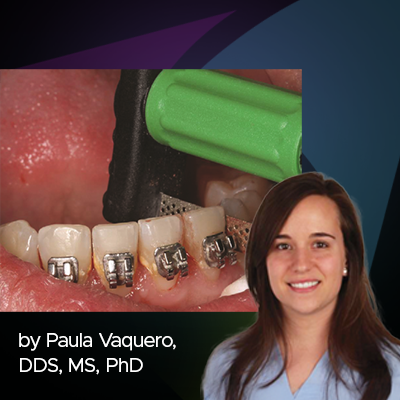
Deep Margin Elevation - An Overview
A common clinical challenge that dentists face is placing and impressing deep subgingival margins for indirect restorations. The deep margin elevation technique is an effective option to predictably relocate deep margins more coronally for more precise scans or impressions. The result is better fitting final restorations that mimic natural form and function.

Extra deep restorations are a significant challenge.
Photo courtesy of Matthew A. Nejad, DDS, Beverly Hills, CA.

Relocate the margin with confidence!
Photo courtesy of Matthew A. Nejad, DDS, Beverly Hills, CA.
Clinical indications to use the deep margin elevation technique include recurrent decay under an existing Class II restoration or first-time caries in proximal areas that extend subgingivally. Traditionally these were either treated with crown lengthening prior to restoring, or with an extraction and implant if deemed unrestorable. Over the past several years, there has been a shift away from more invasive surgical procedures. While crown lengthening efficiently increases the clinical crown height and exposes deep subgingival caries, it can lead to attachment loss and unesthetic interproximal black triangles. Once gingival margins are surgically exposed to the oral environment, complications such as root hypersensitivity and possible exposure of furcations may create difficulty in maintaining oral hygiene.
The conservative deep margin elevation procedure allows for maximum conservation of natural tooth structure. It is a non-surgical procedure and less invasive than crown lengthening. The goal is to seal the dentin and layer restorative material up to the level of the gingiva or slightly supra-gingival. The main benefit of elevating the gingival margin is to provide a more conducive location for the placement of either an indirect restoration or for the final composite restoration. This procedure is backed by numerous studies and is a successful solution for raising the gingival margin.
Proper isolation of the cervical margin during the procedure is critical to ensure clinical success. This is where the Garrison Deep Margin Elevation Bands come in. They are lightweight which helps to keep them in place and the narrowness of the matrix band will allow it to slide subgingivally and seal the margin efficiently.

The Garrison Margin Elevation band has an extra-narrow enhanced conical design that slides subgingivally to properly seal deep margins.
It is important to not place too much composite, keeping increments to 1 mm to control polymerization stress. The coronal height should be in the range of 0.5 mm subgingival to 0.5 mm supragingival. If your deep margin elevation is too tall you will sacrifice the natural emergence profile and not have enough contour leading to an awkward contact. Unnecessary polymerization stress due to this mass of composite may lead to premature failure of the restoration. Due to improved accessibility, the coronal relocation of the gingival margin using the deep margin elevation procedure significantly improves the bond and marginal seal of direct and indirect adhesive restorations and results in immediate dentin sealing.
Also gaining in popularity is using the deep margin elevation technique with direct composite restorations. In this scenario, the Garrison Deep Margin Elevation system enables you to elevate your margin coronally, creating more ideal clinical conditions to resume a more conventional Class II restorative technique.

The Garrison Deep Margin Elevation Kit (DME-01) was developed with leading biomimetic clinicians and has everything needed to successfully relocate deep margins.
Deep margin elevation has a high survival rate and fits well with the main goal of conservative dentistry, which is to keep as much natural tooth structure intact as possible. It can be a benefit for dentists utilizing digital dentistry due to its ability to help optical impressions in the presence of a deep subgingival margin. The deep margin elevation technique can quickly turn a clinically difficult Class II into one that is more easily and predictably treated.
Subscribe to our emails to receive articles like this and be notified about our exclusive promotions.




